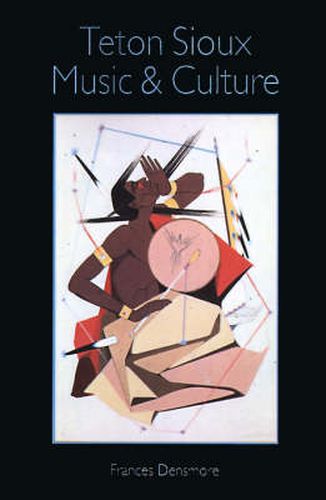Readings Newsletter
Become a Readings Member to make your shopping experience even easier.
Sign in or sign up for free!
You’re not far away from qualifying for FREE standard shipping within Australia
You’ve qualified for FREE standard shipping within Australia
The cart is loading…






Frances Densmore’s Teton Sioux Music and Culture is one of the many volumes that resulted from her prolific life-long project to record and transcribe the traditional music of American Indian peoples. The book explores the role of music in all aspects of Sioux life, and is a classic of the descriptive genre produced by members of the Smithsonian’s Bureau of American Ethnology. Music serves as the vehicle for organizing this detailed account of traditional religion, warfare, and social life, enriched by first-person narrations by the Lakota men and women who worked with Densmore from 1911 to 1914 to preserve their songs by means of a wax cylinder recorder, the modern technology of that period. The evident quality of the narratives, translations from Lakota, as well as the complete transcription and translation of all the Lakota lyrics to the songs, resulted from Densmore’s close collaboration with Robert P. Higheagle, who shared her dedication to the project and was an exceptionally capable translator and cultural mediator.
$9.00 standard shipping within Australia
FREE standard shipping within Australia for orders over $100.00
Express & International shipping calculated at checkout
Frances Densmore’s Teton Sioux Music and Culture is one of the many volumes that resulted from her prolific life-long project to record and transcribe the traditional music of American Indian peoples. The book explores the role of music in all aspects of Sioux life, and is a classic of the descriptive genre produced by members of the Smithsonian’s Bureau of American Ethnology. Music serves as the vehicle for organizing this detailed account of traditional religion, warfare, and social life, enriched by first-person narrations by the Lakota men and women who worked with Densmore from 1911 to 1914 to preserve their songs by means of a wax cylinder recorder, the modern technology of that period. The evident quality of the narratives, translations from Lakota, as well as the complete transcription and translation of all the Lakota lyrics to the songs, resulted from Densmore’s close collaboration with Robert P. Higheagle, who shared her dedication to the project and was an exceptionally capable translator and cultural mediator.